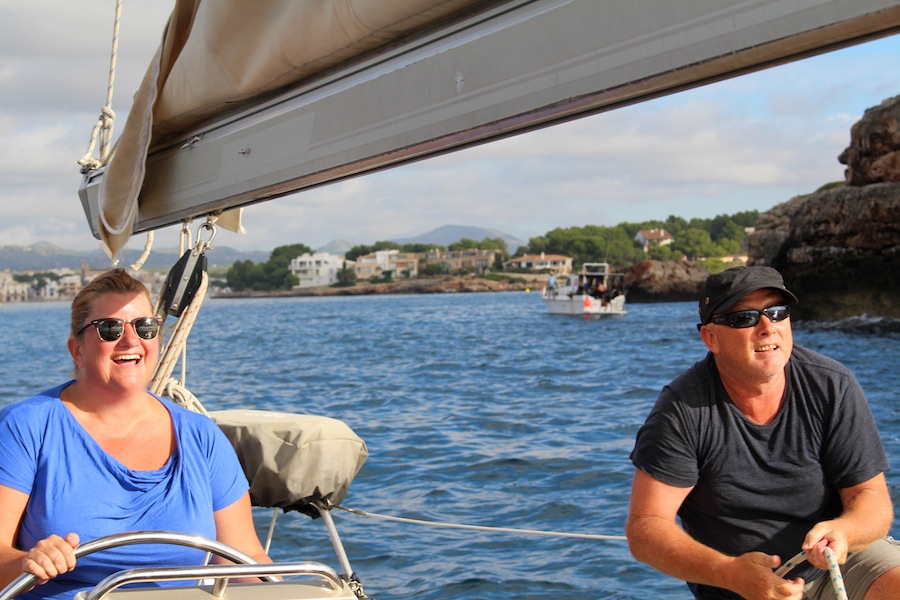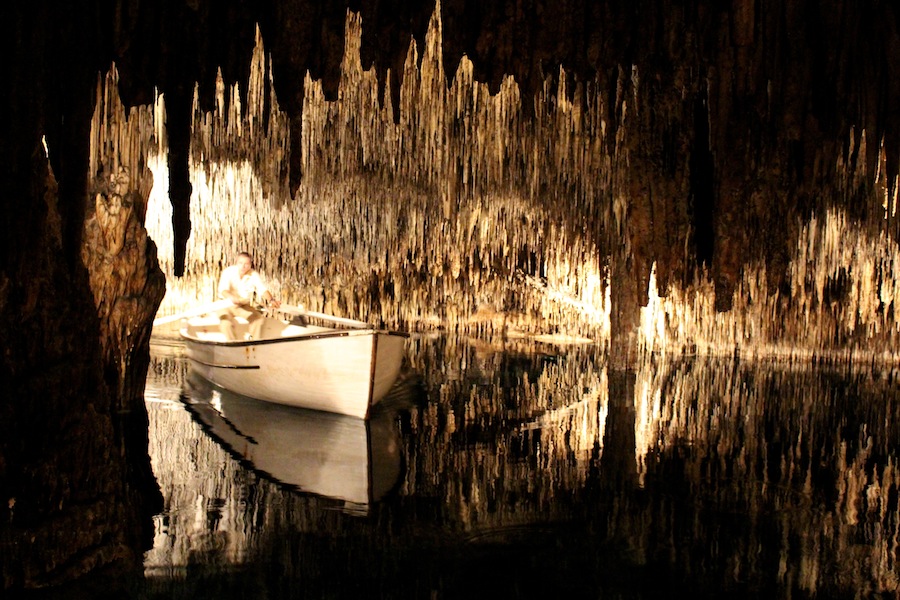It seems pure fantasy to say we crossed one of the world’s largest subterranean lakes in the Dragon’s Caves in an underground boat – but that’s exactly what we did.
The existence of the Cuevas Drach, or Dragon Caves, at Porto Cristo in Mallorca, has been known since the Middle Ages. It is thought they got their name from ancient folklore claiming a big beastie lived deep inside.
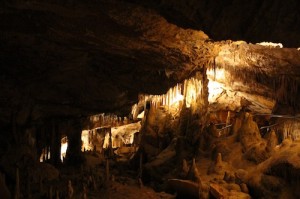
Enter the Dragon
Real exploration came much later. In 1896 Lake Martel, which flows through the caves, was discovered by and named after Edouard Martel – the founding father of speleology, the study of caves. It is around 170 metres long and up to twelve metres deep. He also discovered two of the four caves that make up the mythical dragon’s lair deep in the belly of the island.
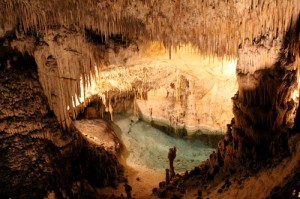
Lakeside in the caves
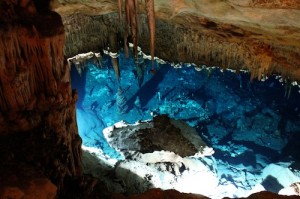
The deep blue lake
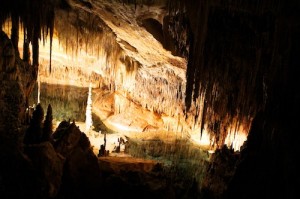
Archaeologists have found evidence of Bronze Age, Carthaginian, Roman and Moorish activity within the caves, proving they were occupied for more than 2,000 years. More recently they have rightly become the premier tourist attraction on Mallorca. But the lake is only half the story. Well before the dragon’s tales were told, silent, seeping water was making magic and has created the most fantastic stalactite and stalagmite formations.
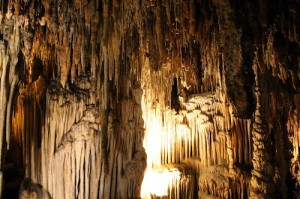
Nature is a crazy thing
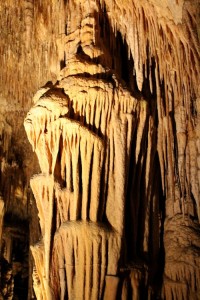
Great natural sculptures
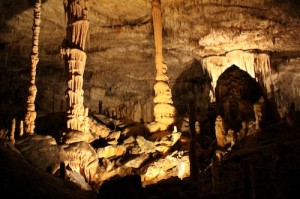
Grand columns dripped over millenia
The calcified creations come in all shapes and sizes. As we took a gentle stroll through evocatively lit walkways light and shadow was bouncing off massive structures in the 25 metre deep caves or illuminating the smallest nub as it worked towards maturity in a few millennia. All with a barely audible drip, drip, drip backdrop. The tour covers just over one kilometre in about an hour, the subjects of the tour manage one centimetre every 100 years.

New growth is a relative thing
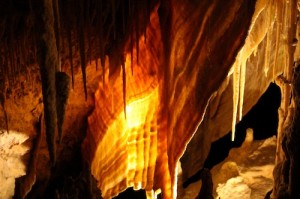
Calcified curtains of salt rock
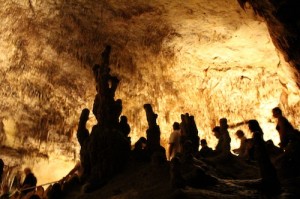
Which are the people and which are the stalagmites
At the end of the route the cavern opens up into a natural amphitheatre and we were treated to what must be one of the longest running live music concerts in the world. Lights were doused and through the dark, the glow of a single rowing boat strung with white lights appears on the lake and drifts through the cave, illuminating the still water. The lead boat, carrying a shadowy quartet deftly playing haunting melodies, was joined by two others and together they softly rowed and slowly pirouetted across the darkness with fine music echoing all around.
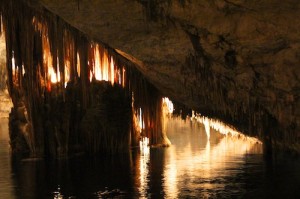
Light and shadow
The water music has been a feature for visitors since 1935 – a quartet always playing the same excerpts from Caballero’s Alborada Gallega, Plaisir d”Amour by Martini, Chopin’s Tristesse, Studio 3 opus 10 and Barcolle from Ofeenbach’s Tales of Hoffman. After the last notes had drifted away, we had the chance to also be rowed across the lake to the exit. It was all beautifully done and transformed the morning from a fascinating visit into a lovely event that will stay in our memories for a long time.
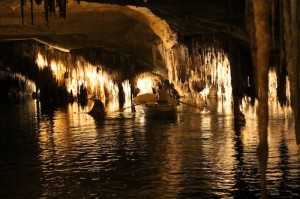
Underground boats in a Dragon’s den
Talking of memories, here’s how one of our less high-brow cavern discussions went: Geoff: “How do you remember which is which?” Sara: “Stalactites cling on tight and stalagmites try with all their might to reach them.” Short silence Sara: “Go on then, how do you remember it?” Geoff: “Tights come down” Admit it – you’re never going to forget that now!
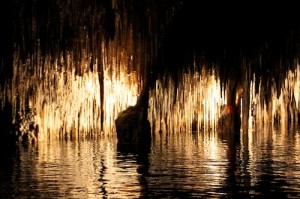
Between reflection and reality

